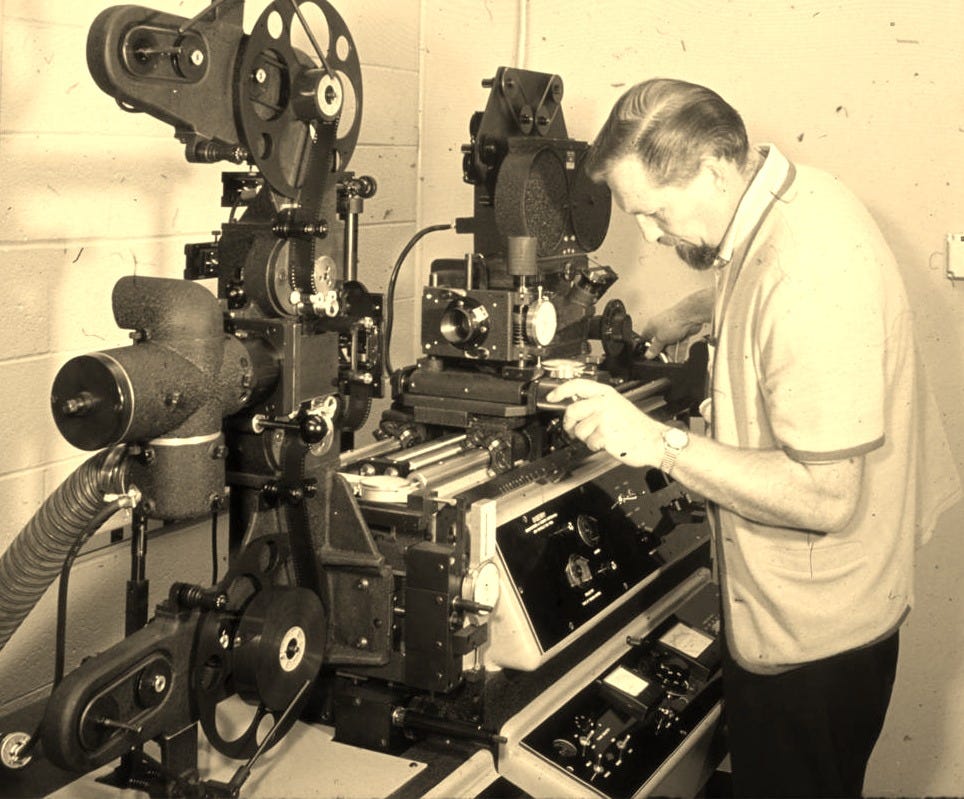My 16mm Optical Printer
For those interested in hearing my voice, I have a podcast. In Episode 2, (link will be made available soon), I speak for a while on my time studying and working with an optical printer.
Wanna watch my film?
I share my film in another post. To watch ‘Keep the Home Fires Burning”, 16mm, 8mins, 2008, click here.
What is an optical printer?
Essentially, an optical printer is an animation movie camera that re-photographs movie film, frame by frame, on a macro level. They consist of 2 sides, a projector side and a camera side. The projector side holds and advances the source material, frame by frame. Click, click, click. The camera side takes a single frame pictures of the projector side. Click, click, click. You can create all manner of effects, but speed changes, dissolves, freeze frames, reframes, color changes, and focus shifts where most in demand.
An easy example of the power of an optical printer was the speed change. Lets say you wanted to slow a shot to half the speed. That would be a 2:1 alteration shot. The projector advances 1 frame, the camera re-photographs 2 times. The camera shoots every frame twice, thereby doubling the length of the shot. What goes through the projector is frames “1, 2, 3, 4, 5”. The Camera side rephotographs the frames 2:1 in this order: “11, 22, 33, 44, 55” etc. It looks a bit chunky, because of the duplicate frames, but the human eye ‘gets over it’ pretty quickly. The action is effectively slowed.
Optical effects get interesting quickly. If you wanted to dissolve between 2 shots, you would load up shot one on the projector side and re-photograph it 1:1, closing the camera shutter down for the desired duration of the dissolve. Then, you’d rewind the camera (shutter closed), and load up the projector with shot 2. You’d fade up the camera side for shot 2, creating a blend between shot 1 and 2. The optical camera film would be processed and cut into the movie as a single strand. There are other ways to make dissolves, but you get the idea.
Optical printers allow you to superimposed lots of imagery, play with the focus, speed, color, and framing along the way. Only the imagination, patience, and money limited the possibilities. To pay a lab for this service was a really expensive and lengthy process. It took a really long time to rephotograph film. Film is 24 frames a second. That’s potentially 24 projector clicks and 24 camera clicks (48) for 1 finished second of film. 35mm optical printers and their film stock, where also pricey. Only a skilled photographer could operate one. The environment had to be dust free (as possible).
Before we had video, it was film, whirring through cameras an projectors, getting advanced by gears and registration pins that mechanically grabbed and held each frame over a light, projecting to the screen, 24 times a second. If a shot was not framed properly, or needed and effect—like a freeze frame or a star wars ‘wipe’—you needed to rephotograph the film frame by frame. This was done in laboratories. The printers where huge, about the size of a Christmas tree.
When you watch films before 2000, it’s easy to spot optically printed material. By it’s nature, its a reproduction. It’s a copy of a copy, so there’s a generation loss in the quality. It’s also very difficult to keep the source material clean in the frame-by-frame process, so you will see hairs and things in the frames as it plays through an effect.
Here’s a picture to of the optical printer I used to own, which was a down sized version of the big one pictured above. It excepted a Swiss Bolex Camera. The Rex4 model was the preferred camera body. The camera held a 100’ load, and would all the filmmaker 2:45sec of frame-by-frame content. Shooting 100’ of film would take anywhere from 5 hours to over a week.
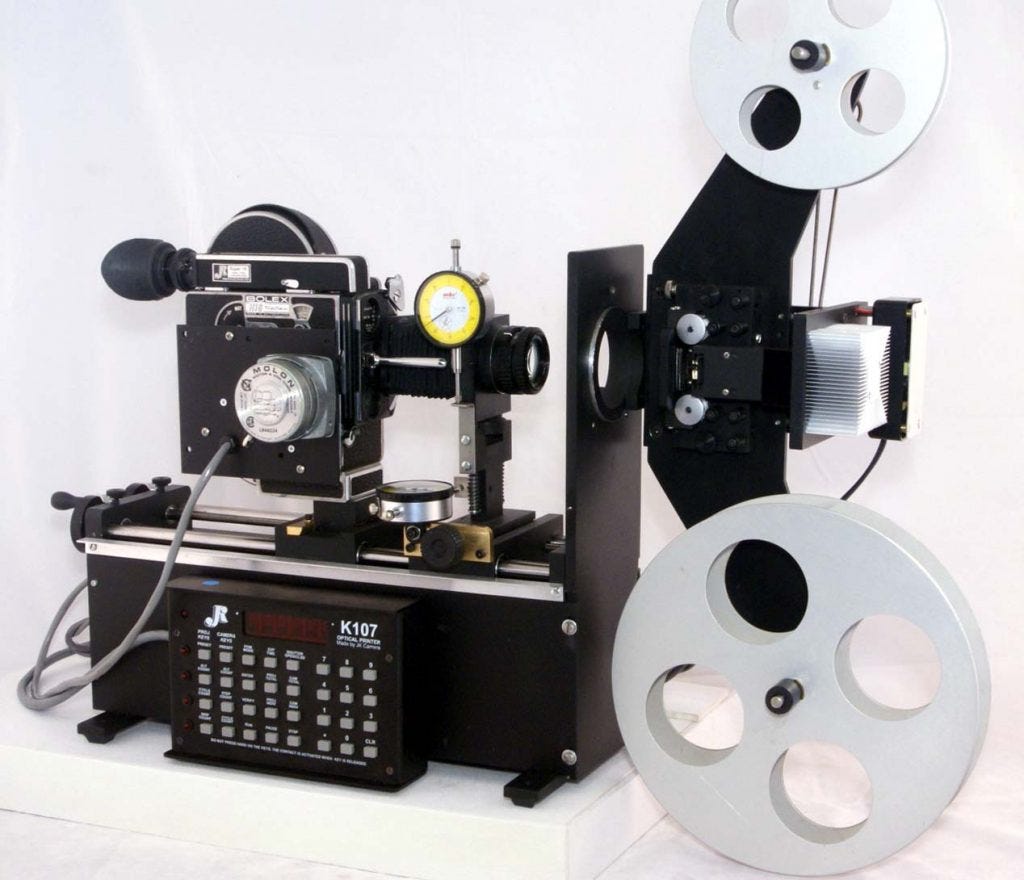
Here’s a few images of me in 2008
I show you these mainly for what you can see in the background—film cans, galore.
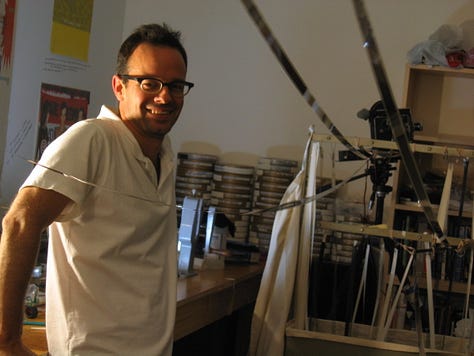

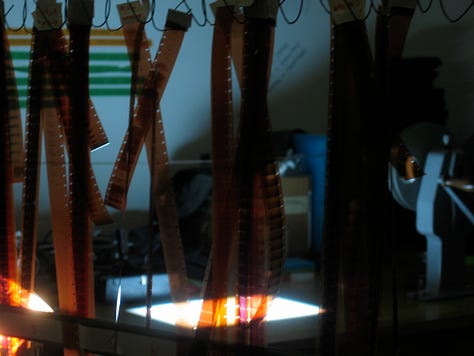






When I moved to NYC in 2006, I had left my existence in London, where I was doing really well in the film industry. Why I left is a story of the heart that I don’t wish to share, but it’s safe to say I didn’t move to NYC for vocational reasons.
The change rocked my world. The first year of my time in NYC, I was freelance video editing (everything but porn), for anyone, and for lots less. I was combing Craig’s list for one-off editing jobs. I did a lot of work I never got paid for. It sucked. I was miserable. The memory of having left a better job in the UK, didn’t help.
Eventually, I established a temporary directive for myself—return to filmmaking. I rented a room inside an old factory building in at 56 Bogart, Williamsburg, Brooklyn and set up a shop. I built all the workbenches myself.
I was working with 16mm film, night and day, even learning how to process black/white high contrast film, in buckets. I rode my bike in at 7am, pedaling home well after 7pm, daily. I was learning everything I could about this medium, buying up equipment from universities, who at the time were dumping everything film in permanent transition to video. I became skilled at negative cutting, and there was still a small demand for it. I cut negative for Tony Conrad and other experimental filmmakers. I became expert at a soon to be dead medium. In a way, it fit my story perfectly.

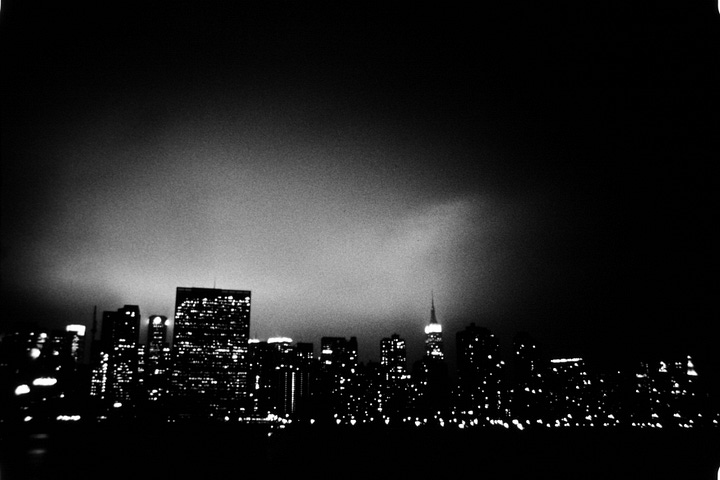
I was seriously fun work. I made some incredible friends, like Bill Brand, who is a legendary artist and master of film-preservation. I was not spring chicken. In 2003, I had earned a Masters in film editing from AFI, and before that, I had graduated from University of Colorado, at Boulder film school in 1998. I was a student of Stan Brakhage, Phil Solomon, and other famous avant garde filmmakers. In 2008, I was a potent mixture of film expertise, both Hollywood and experimental.
I purchased my JK107 optical printer directly from Jaakko Kurhi. This led to even more experimentation. I eventually made a film (link at top).
Jaakko Kurhi: Inventor of the the “JK103” + “JK107”

If you look up “Optical Printer” on Wikipedia, your going to see one of Jaakko Kurhi’s “JK” inventions. Hollywood had been using optical printers for years before JK came along and reduced it’s starting up-costs and format sizes. He passed away in Dec of 2023, just before his 93rd birthday. His obituary from the SF Chronicle is here. I’m saddened by this. His obit implies he was a genius who may have been tough to know, but he was a really nice genius—to me. It’s fair to say his contributions in the growth of avant garde cinema are momentous. My dealings with him were always kind, honest, and pure.
Presently, his www.JKcamera.com website now points here. If you visit, buckle up. A tidal wave of text awaits you. I don’t know the entire story behind this new Mass-bit site, but the redirect appears to be a choice that JK made in 2021. If you navigate there, you will find a hefty chunk of text, he’s called ‘this book’. I feels more like a release of a life-long inquisitive wonderings about the universe. Some might point at it and dismiss it as the ramblings of an old conspiracy theorist, trying to challenge the big-bang theory. Whatever people say—it is tough to read—mainly because there’s hardly any formatting.
I dare you to read it all.
Haha. That’s one hell of a modern dare! I read it all. I kept getting sucked in, with sentences from the prologue like, “Welcome to share my mental experience with the Milky Way galaxy”. Say that out loud, it’s fun. I’m willing to give this man “the benefit of the doubt”, which is the title of his, “this book”. One doesn’t spend their entire life, working for “43 companies”, and inventing loads of game-changing optical equipment, without spending a significant amount of time pondering things NO ONE ELSE thinks about. It’s quite easy to get nostalgic for Jaakko. He was a legend, RIP.
About the author
Ryan OToole (aka, RYNO) is a skateboarder from Arizona with too many film degrees, who writes songs for Pretty City Lights—a new music project based in Seoul, South Korea. His songs have been described as, "alternative rock for people dying of middle age". Formerly associated with the band, Amateur Blonde, his songs have been featured in television and film - notably, The Walking Dead (S10 Ep21). RYNO is the author of Behind The Lights a freemium substack publication, documenting the Pretty City Lights song & album creation process with the slogan, “watch me make music”.


